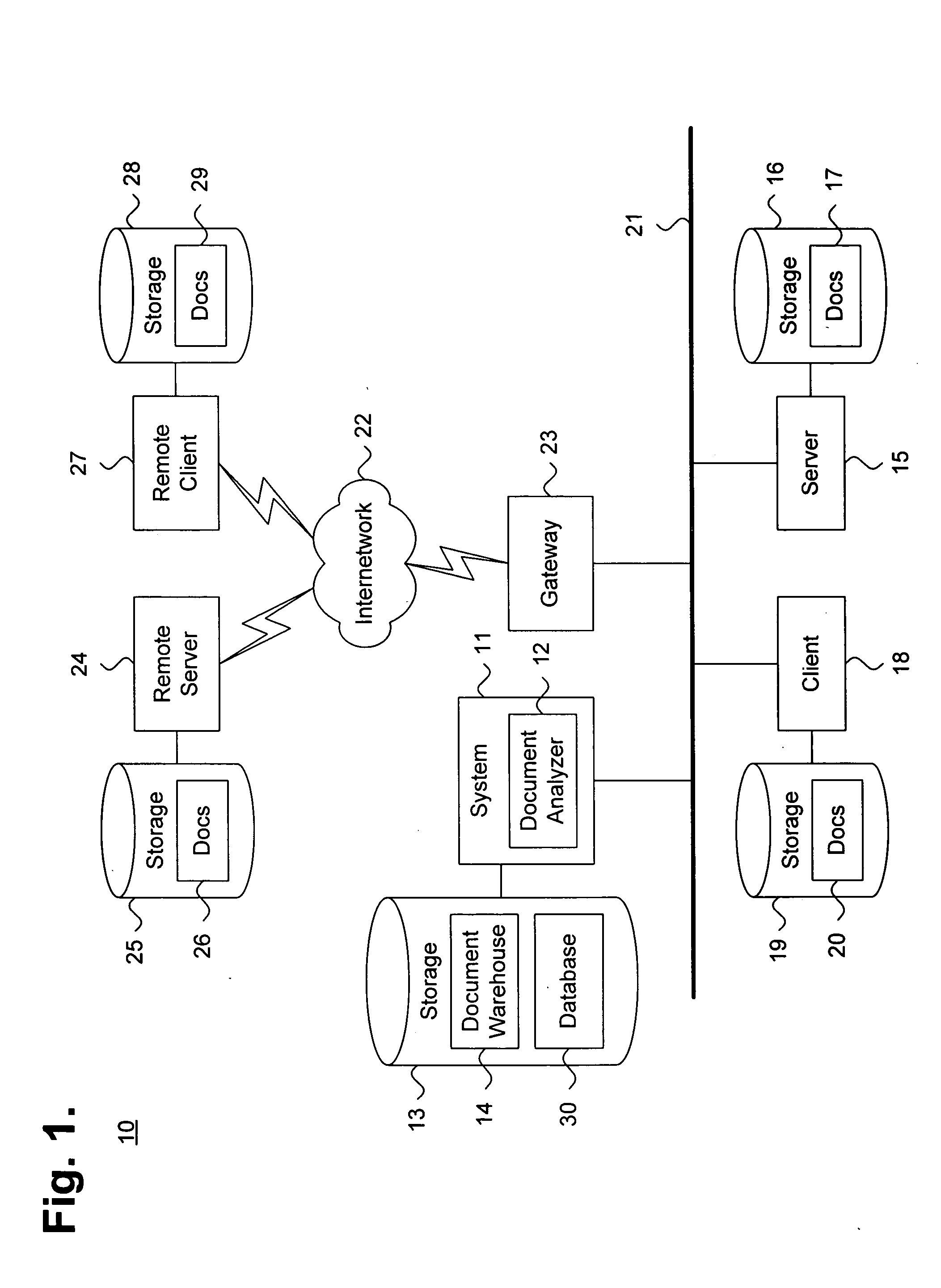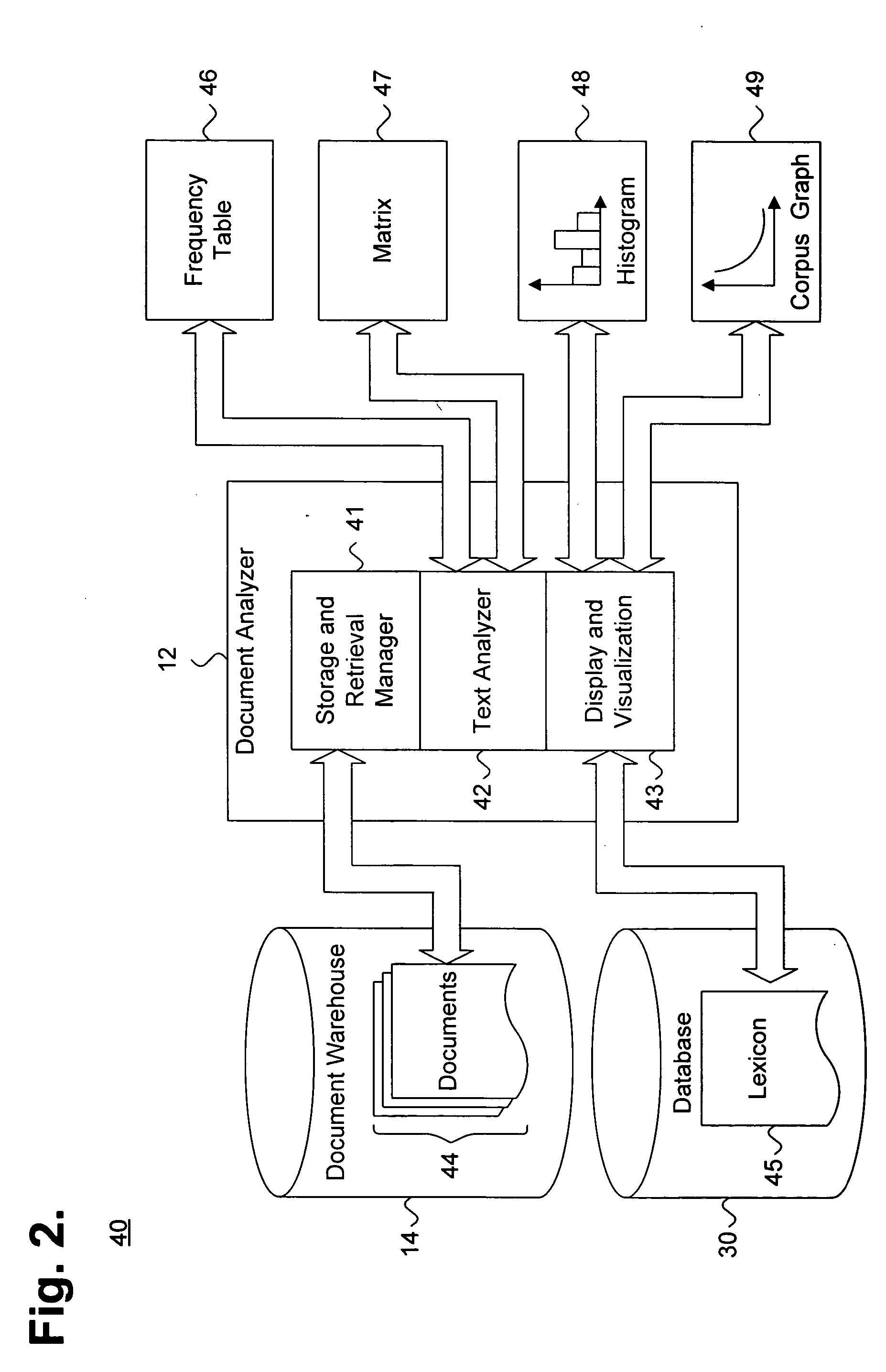System and method for dynamically evaluating latent concepts in unstructured documents
a dynamic evaluation and document technology, applied in the field of text mining, can solve the problems of unable to identify relevant content, document structure lack of common structure or shared type, and high degree of precision and recall
- Summary
- Abstract
- Description
- Claims
- Application Information
AI Technical Summary
Benefits of technology
Problems solved by technology
Method used
Image
Examples
Embodiment Construction
Glossary
[0029] Keyword: A literal search term which is either present or absent from a document. Keywords are not used in the evaluation of documents as described herein.
[0030] Term: A root stem of a single word appearing in the body of at least one document.
[0031] Phrase: Two or more words co-occurring in the body of a document.
[0032] A phrase can include stop words.
[0033] Concept: A collection of terms or phrases with common semantic meanings.
[0034] Theme: Two or more concepts with a common semantic meaning.
[0035] Cluster: All documents for a given concept or theme.
The foregoing terms are used throughout this document and, unless indicated otherwise, are assigned the meanings presented above.
[0036]FIG. 1 is a block diagram showing a system 11 for dynamically evaluating latent concepts in unstructured documents, in accordance with the present invention. By way of illustration, the system 11 operates in a distributed computing environment 10 which includes a plurality of he...
PUM
 Login to View More
Login to View More Abstract
Description
Claims
Application Information
 Login to View More
Login to View More - R&D
- Intellectual Property
- Life Sciences
- Materials
- Tech Scout
- Unparalleled Data Quality
- Higher Quality Content
- 60% Fewer Hallucinations
Browse by: Latest US Patents, China's latest patents, Technical Efficacy Thesaurus, Application Domain, Technology Topic, Popular Technical Reports.
© 2025 PatSnap. All rights reserved.Legal|Privacy policy|Modern Slavery Act Transparency Statement|Sitemap|About US| Contact US: help@patsnap.com



